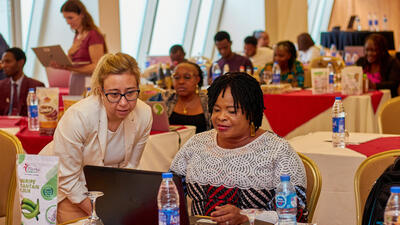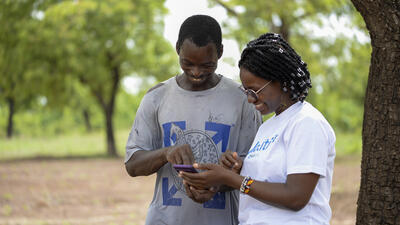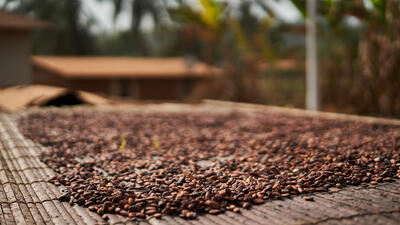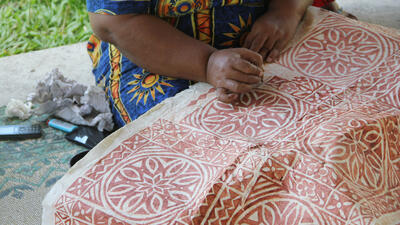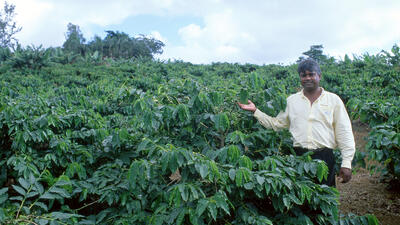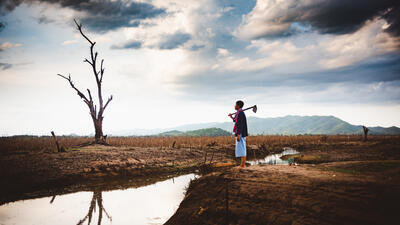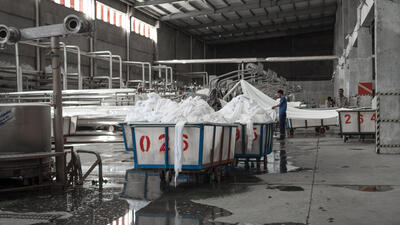THE MAASAI WOMAN- A SOCIAL-ECONOMIC ENGINE OF MAASAI LIFE
Once in Maasailand, one cannot miss the sight of a woman either at work, tending animals, carrying a baby while breast feeding, fetching fuel wood from the surrounding thicket, carrying water containers, or building and repairing a manyatta (1). In between her burdensome chores of the day the Maasai woman is also a beader with such intangible high skills built into her cultural knowledge and practices. Most of her struggles are shaped by circumstances and the challenges of her time including deep seated patriarchal attitude. The woman is simply faced by the “triple burden”: to reproduce, to produce and to bear all the other Social Roles. This report is limited to and is the result of a qualitative research carried out between 27th and 30th Dec. 2010 in Ole Sokorte, Lodariek and Ngon’g hills villages of the Maasai community in Kajiado North. Ole sokorte for instance is a very far flanged semi arid region with acute water shortage. Lodariek and Ngong hill have similar challenges but of lesser magnitude compared to Olesokorte.
The oblong shaped in most cases grass thatched manyatta, is not only the dwelling place for the Maasai but symbolically the warehouse of Maasai culture. Maasai culture is a culture oiled by patriarchy in which men have the monopoly of all decision making process. However, manyatta is very important and of symbolic value to the woman. The woman is the one who builds the manyatta sometimes with the help of her co-wives but in most cases they do it alone. The manyatta is what expresses the woman’s moral standing in the Maasai society besides being the socializing crucible.
A close study of the manyatta reveals how important a woman is to the Maasai, a status that is never recognized and in most cases unappreciated since it is deemed natural and the way by which the society maintain its order. A standard manyatta is partitioned in not less than six ‘rooms’. There is the centre room which doubles as sitting room and a kitchen with two pillars in the middle (in most cases with string(s) tied across them) meant to protect the children from approaching the ever burning fire. On the right of the middle room is a permanently fixed bed (larger than all the other beds) prepared for the man socially identified as the heads of the household. The big bed is made for the men because it is within the practice of men to entertain many other visiting or passing by men with whom they do share beds. On the left of the sitting room cum kitchen is the woman’s bed smaller compared to that of the man and is meant to serve her and the young children. Then there is another room for initiated men and who are not yet married together with a room for the calves and the kids (young goats). The manyatta is considered complete with a store.
“A Maasai man is not supposed to walk swinging his hands like a woman. He must always carry at least a stick, or a club and a sword a symbol of him being in control of all human happenings” (James from Ole sokorte – Kajiado North District)
The woman is not only the social engine but also the link between the man-father and the children (both genders). The man cannot address the children directly at the same time he is culturally socialized not to show affection to the children because that would mean spoiling them. Once the boys are initiated they will join the ranks of the warani the volunteer warrior lot who are almost at the level of necrophilia and charged with the mandate of defending the community and the culture of the Maasai. They are rough, demanding, macho men composed of an age set that is often socialized to express masculinity in all its strength. With graduation to adulthood therefore the men can be addressed by their fathers and other male elders but the girls will stay under the shadow of their mothers until they are married (even after being circumcised)(2)
The institution of marriage among the Maasai allocates more powers to men than women. In that kind of power relation the women are assigned the subordinate status in decision making processes,resource control (land and animals) education and by implication employment opportunities. Women cannot own land or animals even if they buy them by themselves while their husbands are still alive. When the husband dies the custody of resources would be passed over to the elder son who will assume the full authority of the father including disciplining other siblings especially the female regardless of their age. Those women withouta girl child are the most disadvantaged because as they say ‘no one would take care of them in their matrimonial land.’
Even though they have no direct access to means of production (land and animals), the Maasai women are strong, visionary and with good disposition to make headways in economic development. They always struggle to make ends meet by burning and selling charcoal and above all through the sale of their beaded items. Beading besides being commercial activity is a cultural practice which produces products that are ornamental and functional as well as regalia for special ceremonies like marriage and initiation.
The entrepreneurial spirit of the Maasai women is vivid and their zeal a force to reckon with. This is the part that Ethical Fashion Program has tapped into in order to assist the Maasai women in their development endeavors. It is a spirit of development that is not given but exists already in them provoked by their unbalanced culture. Through Social office of the Ethical Fashion project within its focal coordinating company – Ethical Fashion Africa Ltd, there have been efforts to help the Maasai women identify their strength and achievements in order to come to the realization and that emphatic assurance that YES THEY CAN DO IT.
In the spirit of harambee, which is a pull together doctrine of the self – help groups, the Maasi women have chosen consciously to alter the power relations entrenched in their culture by economic means. They are not preoccupied with toppling their men folk from their dominance but empowering themselves in terms of economic power and education. They understand very well what they stand to benefit with their economic empowerment which includes bolstering their participation effectively in decisions that affect their lives. For example Maasai women from Namanga, from Ngo’ng hills, from Lodariek and ole sokorte - Kajiado North are already educating both their children with emphasis on the girl child whom the society seems not to care for adequately.
In the Ethical Fashion Africa Social Impact Assessment (see the report here), there are measurable indicators which show that instead of overpowering the men, through their earning Maasai women gained a qualitative positional capacity to affirm and claim their rights, and to argue against the unbalanced order of their society. For example when they restocked the animals after the drought, their men counterparts began to respect them more and more. Much of that was achieved through their participation in the giant Coop (the Africa Community Totes) which came at the climax of the drought and famine(3). In the same token their men have come to acknowledge their contribution, especially towards household needs and the education of children.
“We Maasai women do not save in the mainstream banking systems. Our banks are in our animals. We may not have the ultimate authority over them once in the kraal but the fact remains that our future is secure thanks to heavens favor. You cannot withdraw easily from the animals because our markets are also quite far. Jackline Nareyu – Enduata Women group Ngon’g hills
The Maasai are agricultural pastoralist whose attachment to animals is a symbiotic phenomenon. Their animals are everything. Some of them do joke that a Maasai can forgo ten million shillings for ten herds of cattle. They are so connected to animals, which also provide for about 80% of their meals(4). This is why they don’t take pride in saving in the banks but in animals. They may use the banking systems - especially mobile banking - just for simple transactions from their customers or relatives living elsewhere.
The low use of the banking systems is a result of ledger fees, deductions and the fact that above all, there are no banks operating in this part of the territory, but only a few mobile banking systems to deposit or withdraw money. Furthermore, Maasai women have no access or control on land and their access to loans using title deeds are impossible without the help of their husbands or sons, another a rare combination of solace.
This report in relation to work of EFAL
In light of the research findings and in-depth knowledge of the Maasai women, Ethical Fashion Africa has embarked on the following consideration;- Planning and implementing a literacy program which has arisen from their need to better manage their business
- Supply the women with orders within their skill base and capacity whenever available
- Sensitize them on environmental issues; why cutting down of trees to burn charcoal is counterproductive to their economic well being and in effect an interference with the ecosystem thus adversely affecting their lives as pastoralists.
- Empower the women to affirm their being, build their capacity in new designs and creative techniques, as well as getting exposed to modern business practices.
- A Manyatta is a Maasai dwelling place oblong in shape; built with sticks, a mixture of cow dung and ash and is grass roofed. It is just about 4 -5 fit raised from the ground.
- The Maasai do circumcise women. This was not expressly revealed to me but the topic kept creping spontaneously in my talks with them. This maybe because the practice is legislated against in Kenya thus has gone underground.
- The year 2009 sow Kenya experience the worst drought that wiped out almost all the animals. The Maasai community as their other pastoralist communities were the worst hit by that wrath of Mother Nature thus plunged in the most awkward situation of food insecurity.
- They have been forced by circumstances to adjust their menu and learn to eat other kind of food.




